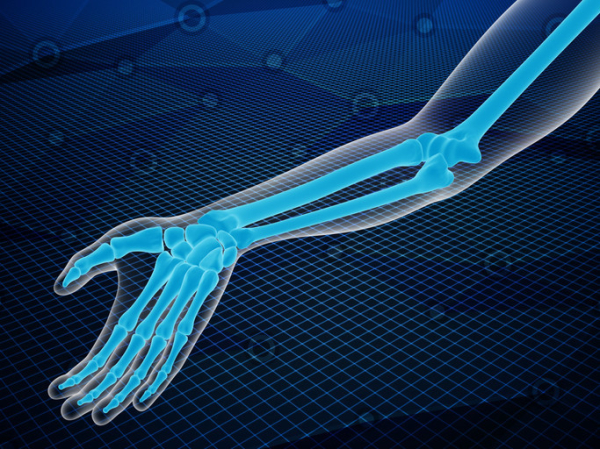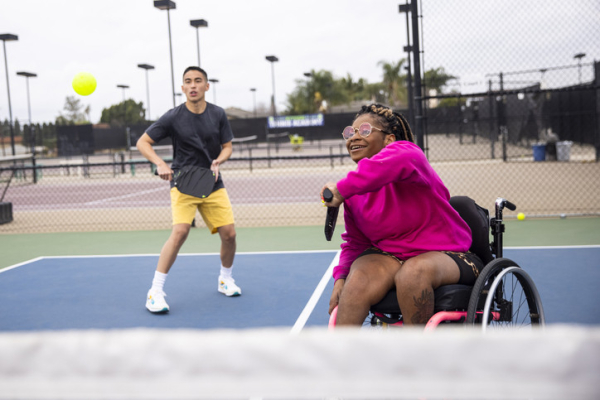
I recently saw a car vanity plate that read “LBODOC” (as in elbow doc). The driver — probably an orthopedic doctor or arthritis specialist — was clearly a fan of the elbow, an unassuming joint and a surprisingly central player in many daily tasks. I could relate: throughout my medical career, the elbow has been my favorite joint.
Here’s why we should give praise to elbows and do all we can to protect them.
What if we didn’t have elbows?
Let’s face it: the human experience would be quite different without elbows.
Imagine your arm without a joint that bends at the elbow. You’d be unable to easily feed yourself, put on makeup, shave your face, or brush your teeth. It’d be tough to get dressed or throw a ball without elbows. And, importantly, wiping yourself after using the bathroom would be nearly impossible.
Yet, when it comes to joints and joint disease, we hear little about elbows; hips and knees get most of the attention. So, let’s consider for a moment what the lowly elbow does and why it deserves more credit.
How do your elbows work?
Three bones come together at the elbow joint: the humerus, which is in the upper arm, and two long bones called the ulna and radius in the lower arm.
Your elbow has two main motions:
- Flexing and straightening. Flexing your arm allows you to bring your hand toward your body (flexion), which you do when bringing food to your mouth or putting your hands on your hips. Straightening your arm (extension) allows such motions as putting your arm in a shirt sleeve or reaching your toes.
- Turning up and down. You can also flip your palms from facing the ceiling (supination) to facing the floor (pronation). These motions are important for many common movements, such as turning a key or a doorknob.
Bumping your elbow: Why is it called the funny bone?
Probably for two reasons:
- The humerus in the upper arm sounds just like the word humorous, meaning funny.
- Bumping your elbow often puts pressure on the ulnar nerve, since it’s located between the bones of the joint. Pressure on this nerve can cause a funny tingling sensation that runs down your arm.
Elbow trouble: Four well-known problems — and a surprising fifth
Like so many overlooked and underappreciated things, most people think little about their elbows until something goes wrong. Here are some of the most common elbow problems:
- Arthritis. Several types of arthritis can affect the elbow, including rheumatoid arthritis, psoriatic arthritis, and gout. Interestingly, the most common type of arthritis, osteoarthritis, doesn’t usually affect the elbow unless there’s been prior damage to the joint.
- Bursitis. The bursa is a saclike structure that surrounds the tip of the elbow. Bursitis develops when it becomes swollen or inflamed, due to infection, gout, or bleeding.
- Tendonitis. Tendon inflammation (tendonitis) may develop on the inside part of the elbow (called “golfer’s elbow”) or the outside (called “tennis elbow”). Despite these names, you don’t have to play any particular sport to develop elbow tendonitis.
- Trauma. Everyday activities and athletic pursuits put the elbow at risk. A bike accident, falling off a skateboard, or just tripping on a curb and falling onto your arm can cause significant elbow injuries. These include ligament damage, broken bones, or bursitis.
And the surprising fifth problem? Cell phone-induced nerve irritation: holding your elbow bent for a long time can lead to “cell phone elbow” due to pressure on the ulnar nerve. This can cause numbness and pain down the arm. The solution? Put the phone down — or at least go hands-free.
How can you protect your elbows?
Considering all our elbows do for us, we need to do our best to protect them. That means:
- Wear elbow protectors when engaging in activities likely to injure the elbows (like skateboarding or roller blading).
- Learn proper technique for activities that can stress the elbow like racquet sports, baseball, weight training, or repetitive motions in carpentry and other types of work. For example, a trainer or coach can help you improve your tennis stroke to avoid overstressing the elbow joint and its tendons or ligaments.
- Use appropriate equipment. For example, avoid using a tennis racquet that’s too heavy for you.
- Train well. Strengthening forearm muscles and stretching can help avoid golfer’s elbow.
The bottom line
As the junction between hand and shoulder, our elbows play a pivotal role in everyday function. It’s high time we recognized them for what they do for us. Even if the elbow isn’t your favorite joint — as it is for me — perhaps it should be in your top five. After all, think of all the things you couldn’t do without them.
About the Author

Robert H. Shmerling, MD, Senior Faculty Editor, Harvard Health Publishing; Editorial Advisory Board Member, Harvard Health Publishing
Dr. Robert H. Shmerling is the former clinical chief of the division of rheumatology at Beth Israel Deaconess Medical Center (BIDMC), and is a current member of the corresponding faculty in medicine at Harvard Medical School. … See Full Bio View all posts by Robert H. Shmerling, MD






